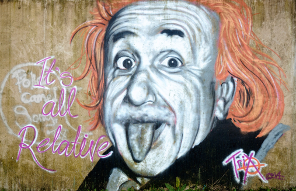‘If you can’t explain it in 20 seconds, you don’t understand it well enough’
A phrase that could have well been spoken by Einstein.
But it wasn’t him.
And yet there’s plenty of truth in it.
During a presentation, on a poster or in just about any conversation, your first 20 seconds are simply crucial.
Your audience will be happy to give you their attention, but really no longer than 20 seconds.
If you’re not able to warm them up to your idea in that short time span, then you’ve lost them.
Oh, how interesting!
You’d better let those first 20 seconds enter with a bang.
Naturally, 20 seconds is not enough to put all of your research into words. But that’s not the point.
Put those 20 seconds to use to spark an ‘oh, how interesting’ reaction among your audience, making them want to find out more. The more questions they raise, the better.
No questions are a sign of your audience not having understood a word of your presentation, or of them simply not seeing the relevance of your research.
.
From problem to solution
Instead of sharing what you do and how you do it, it is much more important to cover the why behind it all.
This is exactly how Stefan Vanbeveren brings his research on poplars. Are you fascinated by those trees? Probably not. But they may very well grab your attention, once you find out how they could provide an alternative for polluting oil or coal.
In those 20 seconds, talk about the problem you are looking to help solve with your research, or which specific needs you are addressing.
Make the problem theirs
Try to respond to a need or problem faced by your target audience. Global warming is something that affects us all, so that’s an easy win.
Now imagine you do research on small-scale coffee production in Ethopia. How would you draw people’s attention to this? By linking your research to their daily cup of pleasure. By letting them know this could one day not be available to them anymore.
Keep it simple
20 seconds will not give you a platform for complex theories.
Make sure you use clear language, bringing simple ideas.
Is your audience still with you after those 20 seconds, then take that opportunity to go deeper.
How do you implement this in a conversation, presentation or poster?
That is what you will learn in our pitchworkshop.
Want to see this workshop being offered at your university, college, company or organization? Let us know!
20 seconds, this is how you do it
We asked researcher Stefan Vanbeveren to explain his research in 20 seconds and headed over to his poplar field:
Foto Einstein: kennysarmy
